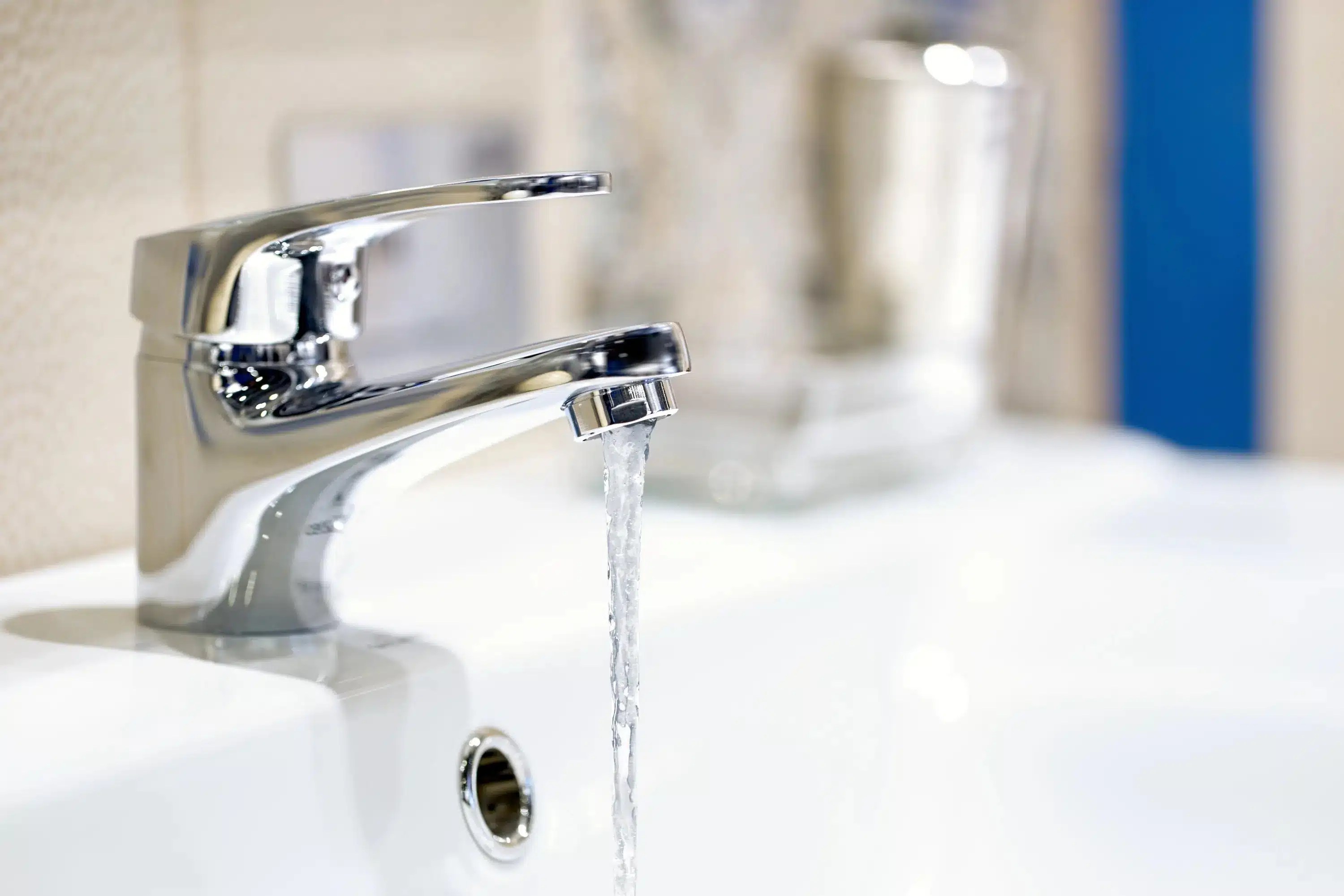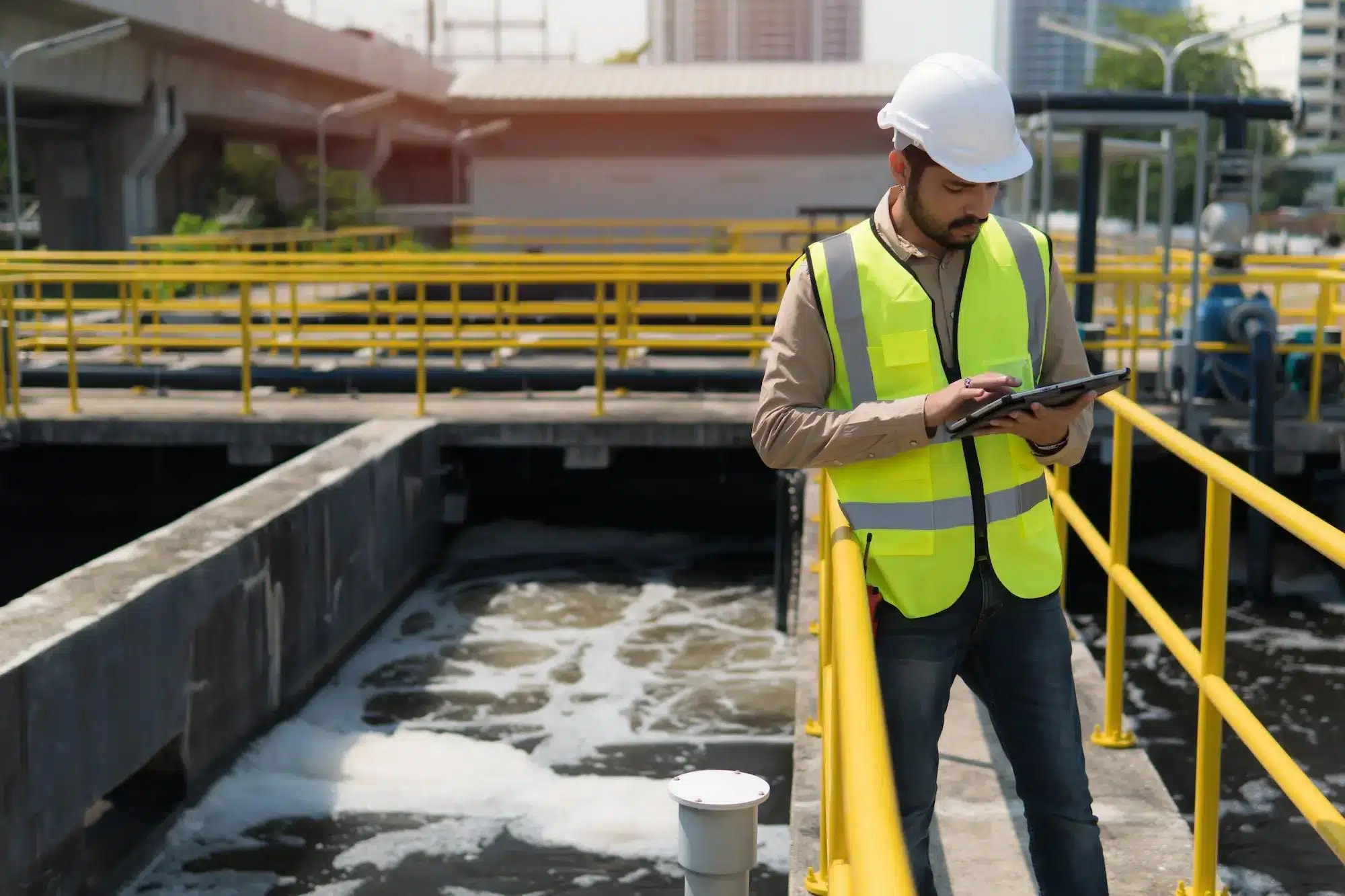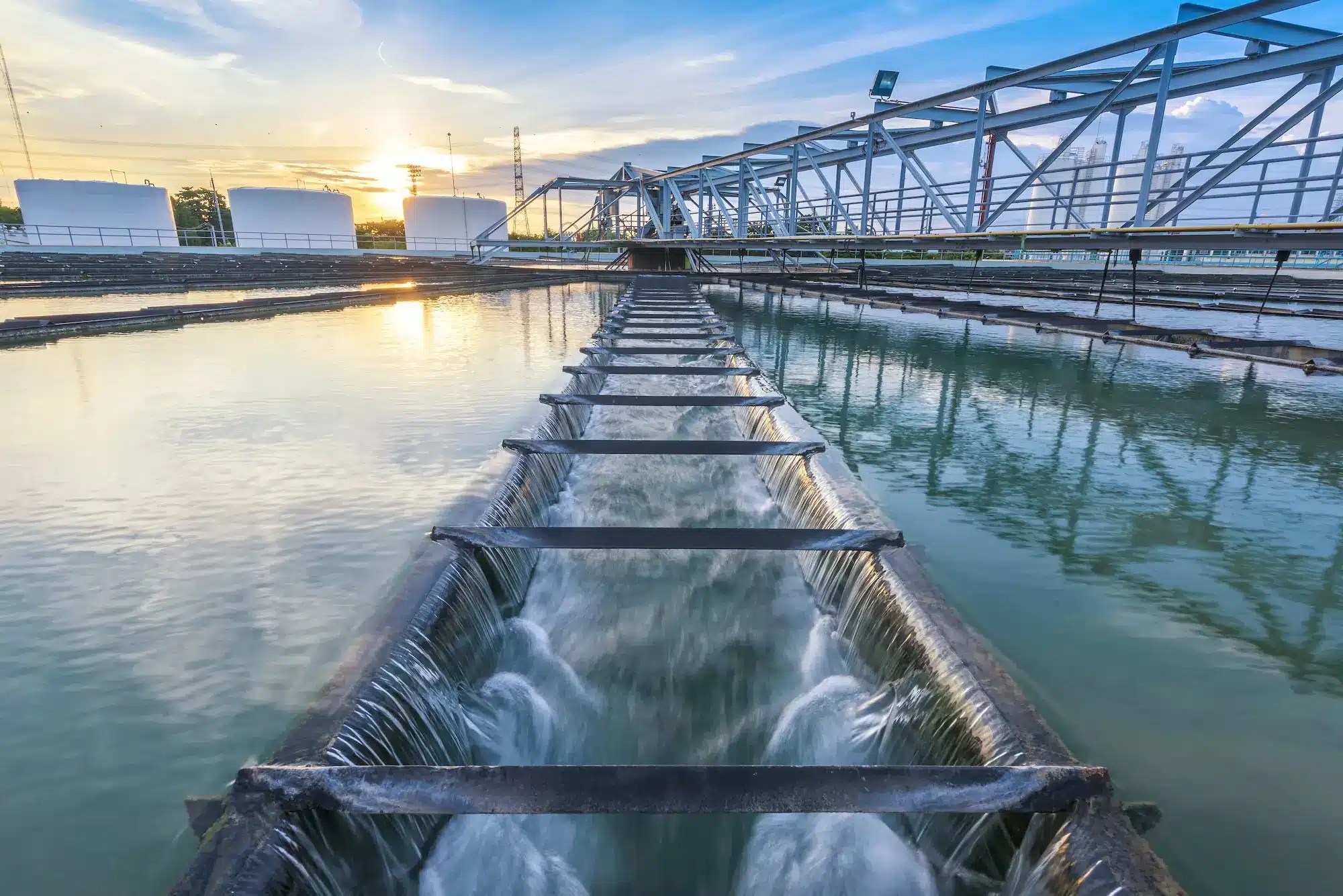“Don’t run the faucet when you brush your teeth, it wastes water!” Does that sound familiar?
Not many people think of water as a finite resource. Most believe water will never run out, flowing forever, sent down from the clouds above, taken up through the earth, and forever recycled. The startling truth is that 97.5% of the earth’s water is seawater which is unfit for human consumption. Then there’s the issue of increasing populations and temperatures, meaning that the freshwater we do have is in serious jeopardy.
Global water demand is projected to increase by 55% between 2000 and 2050. Much of this demand is driven by agriculture, a necessary field that accounts for 70% of global freshwater use. Food production will also need to grow by 69% by 2035 to feed the growing population. Water is also used for our energy sources, such as cooling power stations. This demand is also expected to increase by over 20%. The future represents a huge drain, and the stopper can’t fall quick enough.
According to a NASA-led study, the earth’s freshwater resources are being depleted at a pace faster than they are being replenished. In the moment, leaky pipes, whether in your basement or underground, may not seem like a big deal, but when the earth is quite possibly running out of water, each drop adds up to a huge loss: a loss we can’t sustain forever.
Addressing this issue requires innovative solutions that surpass conventional methods. Advanced models for municipal leak reduction are emerging as life-savers, offering precision, efficiency, and sustainability in the face of non-revenue water (NRW) loss. What are these innovations? What is their impact? What transformative potential do they hold for communities worldwide?
Could this technology help save the world?

Understanding the Challenge
Before diving into solutions, it’s crucial to grasp the magnitude of the problem. Across the globe, water infrastructure faces the constant threat of leaks. According to the American Water Works Association, the United States suffers an estimated 240,000 water main breaks annually, wasting over 2 trillion gallons of treated drinking water. The situation is no less dire in other parts of the world.
NRW loss due to preventable and repairable leaks also strains municipal finances. Repairing infrastructure damage, treating additional water, and managing the environmental fallout exact a heavy toll on budgets. Moreover, leakage undermines the reliability of water systems, jeopardizing water access for communities.
Our water is drying up, and we have the potential to go with it. Of the world’s major aquifers, 21 out of 37 are receding. These aren’t in just one region either, as the issue spans in aquifers from India and China to the United States and France. The Ganges Basin in India is depleting due to population and irrigation demands, by an estimated 2.4 inches every year. Jay Famiglietti, a senior water scientist at NASA, has warned us that “the water table is dropping all over the world. There’s not an infinite supply of water.”
Mexico City is sinking, in some areas, at a rate of nine inches per year due to leaks underground. As the city draws on the aquifer below the city, there is an effect similar to drinking a milkshake through a straw. Once horizontal streets now undulate like tracks on a rollercoaster. The city currenlty imports 40% of its water in a bid to keep its communities alive.
California is also at risk, falling victim to major water-security issues. From 2011 to 2016, the state suffered its worst recorded drought in an astounding 1,200 years. Roughly 1,900 wells ran dry. Relief finally came, but when it did, it wouldn’t stop. During the first three months of 2017, rain fell at 228% more than the normal level. To help put this into focus, Lake Oroville in the northern part of the state went from being at a dangerous 41% of capacity to a dangerous 101% in just two months. This resulted in overwhelmed dams and 188,000 local residents evacuated.
The issue of non-revenue water is universal, and it’s affecting both large and small communities every single year. 14 to 18 percent of water treated each day is lost, That’s enough water to serve 15 million homes. The issue is worsening according to a 2018 study from Utah State University. This study found that pipe breaks in the U.S. and Canada have increased by 27% in the last six years. Despite many feeling their bills are simply too high, water bills paid by customers aren’t enough to fund the water infrastructure. The American Water Works Association estimates a $1 trillion price tag to fix this infrastructure dilemma. And yet, the situation in the U.S. could be worse, as it is in many other developing nations. The World Bank’s conservative estimate suggests 35% of water put into distribution systems may be lost across the 44 countries. Around $14 billion worth of water is lost per year around the world.
To make matters worse, small leaks, which lose less than 10 gallons per minute, aren’t even called leaks, and don’t count toward the ASCE’s number of 240,000. These smaller, hard-to-find cracks are called “potential leaks.” To be classified as a leak by the ASCE, the crack must release enough water that it wells up visibly from the ground. “Potential leaks” become leaks, and leaks become breaks, and millions of gallons (and dollars) pour into the ground.
The issue is continuing to dehydrate the world, each leak is shaping up to be a huge problem. But problems aren’t left without possible solutions, both in terms of small towns, and big cities, technologies, like those used by SiteMap® (patent pending), backed by GPRS, are proving to be a part of the leaky puzzle.
Advanced Models For Advanced Issues

To overcome the limitations of traditional NRW retrieval methods, many water managers are turning to advanced models powered by cutting-edge technology, such as the technology that is used by GPRS daily. Next-generation technologies for water conservation and leak detection aim to reduce waste and promote efficient use of water. These include advanced leak detection systems that utilize artificial intelligence and machine learning to identify and locate leaks, ensuring quick mitigation.
1. Data Analytics:
Advanced data analytics algorithms analyze historical usage data, pressure readings, and geographical information to identify patterns indicative of leaks. By integrating diverse datasets, these models can pinpoint potential leak locations with remarkable accuracy, enabling proactive leak detection and repair.
2. Sensor Networks:
Advancements in sensor technology have facilitated the deployment of robust sensor networks across water infrastructure. These sensors monitor various parameters such as pressure, temperature, and flow, providing valuable data for analysis. By strategically placing sensors along pipelines, municipalities can detect leaks promptly and accurately, enabling timely response and mitigation.
3. Other Methods and Examples
There are plenty of unique methods being used worldwide to help reduce the drain of our important water resources. Some are only able to operate effectively with the help of ground penetrating radar and other complementary technologies, as some require an initial understanding of the location before the new technology can be placed.
AQUAKIT SRL (from Bolivia) is a greywater treatment system meant for large-scale residential and commercial buildings. This system can reclaim up to 300,000 liters per month from a single 12-story building. By recycling greywater for non-potable purposes, like toilet filling, irrigation, and cleaning, AQUAKIT drastically reduces water consumption while also minimizing wastewater emissions.
As many would guess, Australia is hot and dry, and is also struggling to keep water stores high. Australia’s Bureau of Meteorology estimates that nation-wide average non-revenue water losses are sitting somewhere around 10%. Granted, this figure is low compared to other places around the world. However, if the figure was reduced to even just 6%, it would result in Australia sowing an energy savings of 10%. To help fight water loss, Australia has come up with a unique solution: leak sniffer dogs.
When managing chlorine levels in tap water reaching up to four parts per million, the mighty nose of a sniffer dog has no problem sorting the leaks out from puddles. These innovative and powerful noses are able to detect one particle of an odor or scent in a billion!
Digital twins also play a vital role in NRW reclamation. They are important virtual representations of a real-world object or system. They are so useful that they have been gaining traction in the tech community for their ability to use real-time data in their modeling, enabling experimentation with larger objects. SmartTerra of India is deploying digital twin technology in their water networks to reduce water losses. They have also found that digital twins not only help reduce water losses, but they also help to enhance revenue streams. Our talented Mapping and Modeling Team is able to create digital twins (and detailed as-builts) just like the ones being used to preserve India’s water sources.
The agricultural industry, responsible for 70% of global freshwater withdrawals, is the biggest drain on our current water supply. SEABEX in France is using digital twin technology to allow precision irrigation to go sensor-less. Driven by AI algorithms, this unique technology enhances crop yields and allows farmers to reduce water waste by up to an amazing 50%.
4. Inspections and Combination Methods
Annual inspections, known as water loss surveys, may utilize some more traditional leak detection methods, but they are one of the most reliable ways to detect pressurized water line leaks. These inspections are made even better when the data is represented in an easy to understand platform, annotated and aggregated on searchable and customizable maps. GPRS VPI and leak detection services enhance a utility locate or full-site scan because they not only find the pipes, our Project Managers deploy robotic sewer scope cameras, push cameras, lateral launch cameras, and additional technologies to inspect them, document their existing conditions in an interactive, NASSCO-certified report, and include them in a comprehensive, layered utility map, delivered digitally via SiteMap® for your use, 24/7.
GPRS strongly recommends sanitary and storm sewer system inspections every other year to update your existing condition documentation, find new breaks, cross bores, and defects, and protect your system, facility, and community.
We Intelligently Visualize the Built World® through utility locating, concrete scanning, 3D laser scanning, and leak detection, which can all complement our NASSCO-certified VPI reporting to provide you with accurate as-builts of your entire infrastructure. Our in-house Mapping & Modeling Team can take it a step further, we can integrate your existing as-builts and even proposed changes to assure accurate measurements and locations of existing assets, to save you time and money. With GPRS, neither your water, nor your income will dry up.
Impact and Benefits

The adoption of advanced models and new technologies for leak reduction yields a myriad of benefits, both tangible and intangible. The United Nations Educational, Scientific and Cultural Organization (UNESCO) estimates that 2 billion people just don’t have access to safe drinking water with 3.6 billion lacking access to safely managed sanitation.
Through technology and science, the same type that is used every single day by our elite Project Managers at GPRS, societies are able to monitor and preserve our precious water sources, preventing leaks and securing resources for the future. There are many benefits when it comes to the preservation of water and leak reduction, including:
1. Conservation of Resources
By minimizing water loss, municipalities conserve a precious resource and ensure sustainable water management. This not only benefits the environment but also enhances water security for communities. Conservation is crucial, as according to the United Nations, over 40% of the global population currently experiences water shortages, and this figure is expected to grow. What’s worse, less than 3% of the world’s water supply is freshwater that is suitable and accessible for human use. By conserving water as much as possible, we’re ensuring that billions of people worldwide have access to proper drinking water for years to come.
2. Cost Savings:
Efficient leak detection and management translate into significant cost savings for municipalities. By addressing leaks promptly and accurately, infrastructure damage is minimized, reducing repair costs and operational expenses. GPRS is skilled at finding leaks before they start to also drain your wallet.
GPRS has had many satisfied clients like the one discussed above. The client, a municipality in New York, was experiencing a significant amount of NRW loss due to leaks along their 110-mile system. Utilizing acoustic leak detection, and leak detection correlators, the GPRS Project Manager evaluated the entire system including hydrants, in-line main valves, and service valves.
The findings were stark: 18 leaks, four of which were costing the town over 10,000 gallons per day each in NRW loss. After GPRS, New Castle saved an estimated 125,000 gallons per day (GPD) after resolving the detected leaks. They were also able to dig only where they needed to rather than excavating large segments of the water system to inspect for leaks, and also experienced improved service performance and reduced risk of service interruptions. There are 2.2 million miles of water lines in the U.S., and GPRS is here to help with every inch of them, saving you money, and most importantly, saving you water.
3. Improved Service Reliability
Whether you’re a facility manager, general contractor, or a municipality, by proactively addressing leaks, you’re able to enhance the reliability and resilience of water systems. This ensures uninterrupted water supply for residents and businesses, fostering community trust and satisfaction. GPRS strives to take it a step further. By having your Project Manager flag and paint their findings directly on the surface, you and your team know where it is and is not safe to dig. GPRS also uses a global positioning system (GPS) to collect data points of findings used to generate the maps and models you need to Intelligently Visualize The Built World®. Water is a basic need for life of all types, service interruptions can lead to serious consequences, especially when so many of them are preventable by maintaining a proper schedule of inspection and maintenance.
4. Environmental Impact
We may not like to hear it, but water is a finite resource, and it’s becoming harder to retain much of our water stores. With most of the water on earth being non safe for human consumption, it becomes even more crucial that conservation efforts are accelerated. Reducing water loss through leaks has a positive environmental impact and mitigating leaks minimizes the risk of contamination and environmental damage.
The Road Ahead

From leak detecting robots to GPRS leak detection correlators, there are more and more ways to detect leaks and save water. As municipalities continue to grapple with aging infrastructure and increasing water challenges, the need for advanced models for leak reduction becomes increasingly pressing. Embracing innovation and harnessing the power of data analytics, among other technologies, is a crucial step in the road ahead.
By merging innovative technologies and trusted classics, GPRS can perform routine Water Loss Surveys to update your existing condition documentation, find new defects and leaks to better maintain your system, protect your water, and your community.
Cities all around the world are turning to technology for more efficient and effective water management. Many cities are utilizing smart technologies like IoT (Internet of Things) sensors and AI (Artificial Intelligence.) These technologies are being used to monitor water quality, detect leaks, and manage water flow. These technologies allow for these processes to happen seamlessly, and quickly.
Places all over the world are adopting new technology to help answer this age old water problem. The Singapore Public Utilities Board has implemented a smart water grid system that uses IoT technology to provide real-time monitoring and control of the water supply network,. This network then enables the immediate detection and repair of leaks.
Barcelona offers something similar with a smart irrigation system that uses weather forecasts and soil moisture data to optimize the watering of its public parks. This method has shown to reduce water consumption by 25%.
Through the approach of harnessing the power of technology, cities are able to take major strides towards water conservation, helping to ensure the sustainability and availability of this precious resource for future generations. This integration of technology into water management not only promotes efficiency and reliability but also contributes towards the much larger goal of creating smart and sustainable cities worldwide.
As communities throughout the world confront the monumental task of water conservation and resilience, these innovations pave the way for a more sustainable future. With GPRS, your Project Manager can accurately map any pressurized water system, fire loop, or sanitary and storm sewer systems, and other utilities if needed, and provide you with complimentary CAD drawings or a .KMZ file, delivered via SiteMap®. Every GPRS customer receives a complimentary SiteMap® subscription as part of their package.
Water is important, don’t let a leak turn into a catastrophe. Contact us today for more information on how we can help you save your city’s water supply.
